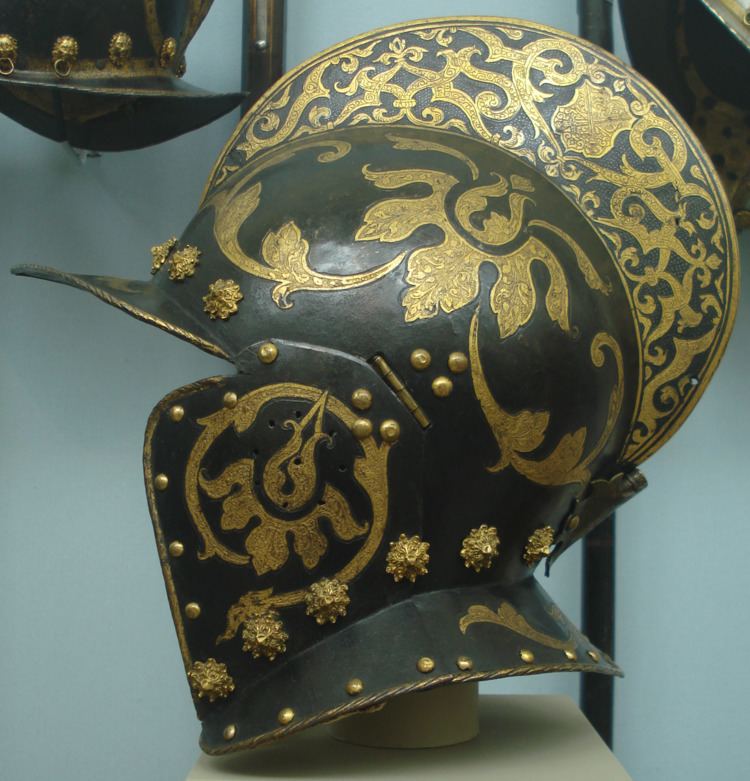 | ||
The burgonet helmet (sometimes called a burgundian sallet) was a Renaissance-era and early modern combat helmet. It was the successor of the sallet.
Contents
Characteristics
The burgonet helmet is characterised by a skull with a large fixed or hinged peak projecting above the face-opening, and usually an integral, keel-like, crest or comb running from front to rear. Attached to the skull are substantial hinged cheekpieces which usually do not meet at the chin or throat. A flange projects from the lower parts of the skull and cheekpieces to protect the back and sides of the neck. Though typically a relatively light helmet and open faced, a falling buffe, a sort of visor that was closed by being drawn up rather than down, was sometimes used. Some helmets, often termed "close burgonets", were made which took elements, such as the peak, crest and falling buffe, of the burgonet and combined them with the hinged bevor of the close helmet.
Use
Commonplace throughout Europe, it first came into use early in the 16th century and had attained its classic form by c. 1550. Accompanied by plate armour, burgonets were mostly worn by cavalry: cuirassiers, demi-lancers and, in Eastern Europe, hussars.
The Border Reivers, of the English-Scottish borderlands, were very fond of burgonets and the morion in Elizabethan times, and as a result reivers were often called steil (steel) bonnets. Burgonets were also a popular helmet type among the Polish winged hussars, where they merged with types of lobster-tailed pot helmets (zischagge), often featuring a nasal bar or facial guard.
The burgonet was common among the mercenary Swiss infantry who were pikemen who could defend themselves against cavalry (perhaps taking helmets of this form as trophies). Following the appearance of the Adrian and Brodie helmets and the Stahlhelm, in the First World War, the Swiss experimented with a "streamlined" form of the burgonet for their own national helmet, but both designs were rejected.
The factors of utility of the burgonet over older helmets include:
